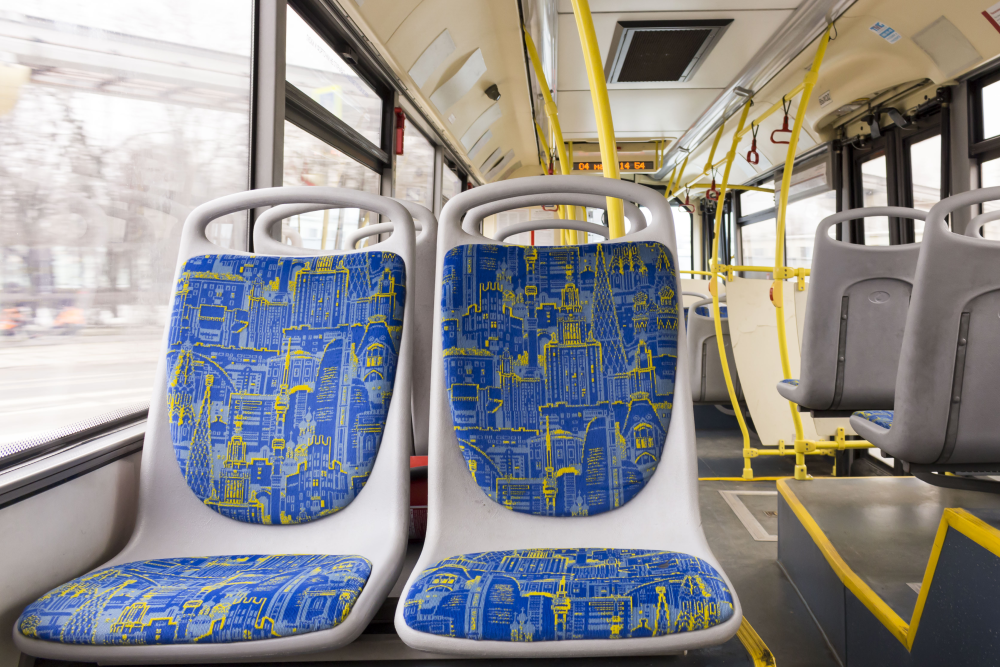The garish prints of public transport seats are pretty hard to miss. Zany, vibrant, often with asymmetric and chaotic patterns, you’ve got to wonder what inspired such eccentric designs. As it turns out, it has a lot to do with grime.
The patterns of fabric used on the seats of trains and buses vary across the world, and so too do their functions. Some depict what the seat is for, such as in the case of priority seats reserved for the elderly, people who are pregnant, injured, or have a disability. Other times, they remind folks of where they are, such as in the below example from Moscow.

Still a classically chaotic color combo, but this time in the shape of Moscow.
Image credit: wasilisa / Shutterstock.com
But what else do all these patterns have going for them? Well, they’re pretty good at hiding stains.
The daily commute can be tough on fabrics. Between the many bottoms that will plonk down in the morning, and the spills and regurgitations you might anticipate on the boozy night service, there’s a lot of room for error. In the same way that you wouldn’t choose to wear a crisp white shirt while enjoying a particularly saucy bolognese, you don’t want a minimalist seat design.
In short, busy patterns make it harder to see stains.
There was also method to the madness, however, as seating fabric took on a second function as a design icon in parts of the world. Textile artists tried their hand at creating suitable designs that worked well in daylight, as well as artificial light, taking inspiration from everything from nature to famous artists.
You may have also noticed that the fabric used for seats on buses and trains isn’t like any you’d find on a sofa, and this too comes down to intentional design. The Celebrating Britain’s Transport Textile project dove into the rugged world of moquette, the favored fabric of public transport.
“Coming from the French word for carpet, moquette has been seen and sat upon by millions of commuters on buses, trains, trams and trolleybuses for over 100 years,” explains the London Transport Museum. “It is produced on looms using the Jacquard weaving technique, with a pile usually made up of 85% wool mixed with 15% nylon.”
“Moquette was chosen for public transport for two reasons. First, because it is hard wearing and durable. Second, because its colour and patterns disguise signs of dirt, wear and tear. On top of this moquette had the advantage of being easy and cheap to mass-produce.”
So the next time you’re thinking the décor of your bus is a bit much, take a moment to appreciate the thought that’s gone into all those manic colors, geometric shapes, and rugged surfaces.
Just don’t look too closely.
Source Link: The Grim Reason Buses And Trains Use Such Weird Fabrics On Seats